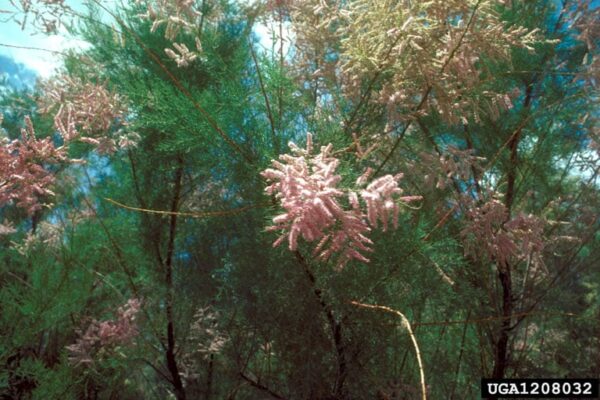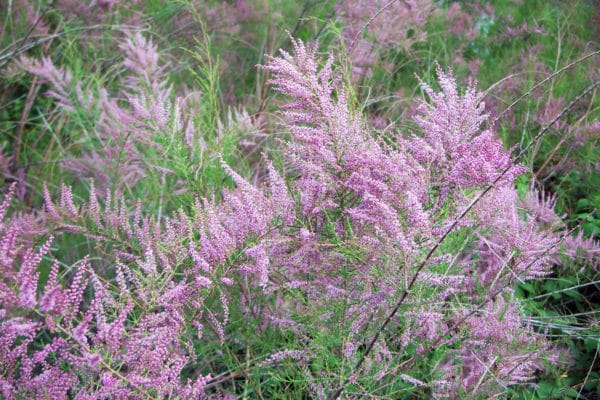Tamarisk
About This Species
Tamarisk (salt cedar) is a shrub-like tree native to Europe and Asia. It’s other known common name of ‘salt cedar’ comes from its ability to release salt from its leaves, which prevents the growth of any native vegetation within its range. A single tree can produce hundreds of thousands of seeds. Tamarisk prefers moist soil located in pastures and rangelands, waste areas, drainages, streambanks, rivers, near lakes, and coastal areas.
How to Identify
Tamarisk is a thicket-forming shrub that can grow 2-3m in height.
Flowers are light pink in airy clusters.
Leaves are light green and scale-like.

Take Action
Prevention is key for controlling Tamarisk. Be PlantWise and choose a non-invasive alternative for your property.
-
If you need advice about invasive species on your property or you are concerned about reported invasives in your local area, contact your local government or regional invasive species organization.

Clean, Drain, Dry
Learn about best practices
The Clean Drain Dry program empowers you to help reduce the spread of invasive plants and organisms to BC waters by following the clean, drain, dry procedure on all watercraft and equipment.

Plantwise
Learn about best practices
A few non-invasive alternatives to plant instead of Tamarisk include:
- Birchleaf spirea (Spiraea betulifolia subsp. lucida)
- Lewis’s mock orange (Philadelphus lewisii)
- Pacific ninebark (Physocarpus capitatus)
- Preston lilac (Syringa x prestoniae)
- Smoke bush (Cotinus coggygria)
REPORT TO PROTECT BC’S BIODIVERSITY

Use the app
Observe and report to protect BC’s biodiversity

Report through this website
Use our form to tell us what you’re seeing and where.
















